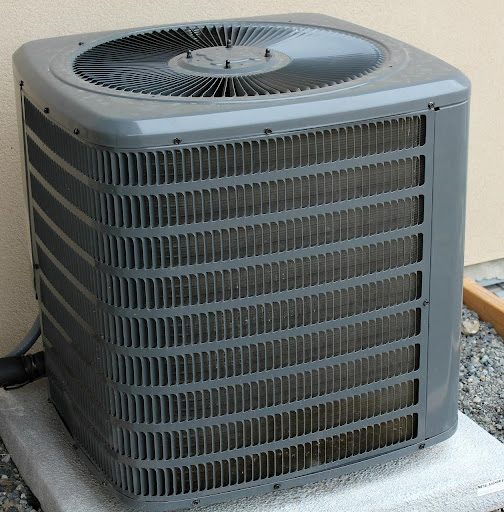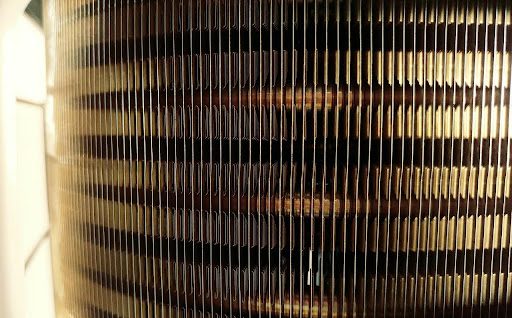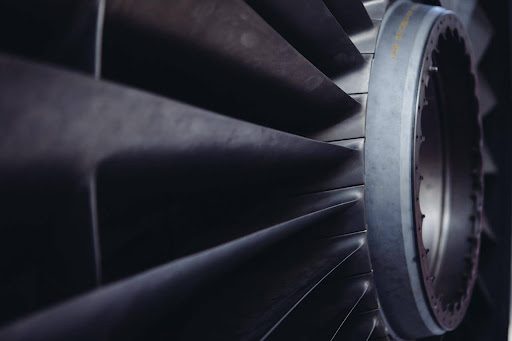Basic Air Conditioner Maintenance
Your air conditioning system keeps you comfortable in the summer months by lowering indoor temperatures and reducing moisture levels. Attending to a few routine maintenance tasks regularly should keep it running reliably for years. Replacing air conditioner filters and cleaning dirt and debris from coils and other components may prevent allergens like mold, pollen and dust mites from entering your home, and maintaining your home cooling system could also save you money. This is because AC units that run efficiently use less energy and need replacing less often. If you want your air conditioning system to run efficiently and keep you comfortable when outside temperatures soar, you should check and maintain it at the beginning of each cooling season.
Fortunately, basic air conditioner maintenance is relatively straightforward. No advanced skills are needed, and no special tools or equipment are required for most jobs. You will need a multimeter to check electrical controls and an HVAC gauge to check refrigerant levels, so you may want to call a trained technician to perform these tasks.

Change Air Conditioner Filters
Your air conditioner’s filter should be cleaned or replaced every three months or so. More frequent filter changes may be required if you live in a dusty area, own pets that shed a lot of fur or run your system constantly. Most air conditioner filters are disposable, but filters made from plastic mesh or nylon weave materials can be removed, cleaned and replaced. When you purchase replacement air conditioner filters, make sure to check their MERV ratings. Filters with higher MERV ratings provide better filtration and improve indoor air quality.
When air conditioner filters become clogged with dust or dirt, airflow is reduced and the system’s efficiency is compromised. Air that flows around a clogged filter can also deposit dirt on air conditioner evaporator coils, which can lead to heat buildup and further impede performance. When you replace or clean a clogged air conditioner filter, your system’s energy consumption could fall by up to 15%.
The filter will probably be located where your air conditioner’s return duct connects to the unit. You may have to use a screwdriver to operate the latch on the filter enclosure’s door, but removing and replacing the filter is a straightforward job. Just make sure that the air direction arrows on the replacement filter align with the arrows on your unit.
Keep AC Coils Free of Debris
Your air conditioning system’s evaporator coil keeps the refrigerant cool enough to absorb heat. When dirt accumulates on the evaporator coil, it acts as an insulator and prevents the component from doing its job. Changing your filter regularly is the best way to prevent this from happening, but you should also visually check and clean the evaporator coil at least once a year. This is especially important if the unit is located in an area with lots of foliage and falling leaves.
Cleaning air conditioner coils involves opening the unit, so switch off the power supply before you start. Remove loose dirt with a soft brush, and then spray the coils with a detergent mixture to loosen grime. Products made specifically for this purpose that foam up when they are applied are available at home improvement stores. Give the cleaning solution a minute or two to soften dirt and grime, and then clean the coils with a soft brush. When you are done, rinse the coils with a garden hose. While you have the unit open, inspect the evaporator’s aluminum fins for signs of damage. Devices called “fin combs” are designed to repair compressed fins, but you can also use a butter knife.

Adjust or Replace the Fan Belt
If you have an older air conditioning system, it likely uses a belt to operate the condenser fan. Most newer systems have bearings instead of belts. This belt has a limited operational life, and it will start to wear and stretch long before it fails completely. You can find out if your belt has been stretched by using the fingers of one hand to squeeze the top and bottom of the belt together. If they touch, your belt should be replaced. Before you do this, visually inspect the belt for signs of cracking or tearing.
You probably won’t have to loosen any screws or bolts to adjust or replace your air conditioning system’s belt, but you should make sure that the power is disconnected before you begin. If the fan switches on while you are working, your fingers could become trapped. You should be able to remove the belt by pulling it toward you gently with one hand and using your other hand to manually turn the wheel the belt is connected to. Reverse the procedure to install a replacement belt.
Lubricate Motor and Bearings
Use a quality oil to lubricate your air conditioning system’s motor and bearings, and avoid products like automotive oils that include detergents. These chemicals are great for removing grime from the inside of car engines, but they can damage air conditioner fan bearings. The air conditioner motor is attached to the underside of the cover, so you will need to remove the cover to access its oil ports. Before you open the oil ports, check the fan blades for damage and make sure that the motor shaft is able to move smoothly.
The oil ports are protected by rubber plugs that can be removed with a fingernail or screwdriver. Once this is done, pour oil in slowly until it starts to spill out. To complete the process, wipe off any excess oil with a rag, reinstall the oil port plugs and then reattach the cover.
Check and Clean Blowers and Fans
The motor that blows air into your home is the beating heart of your air conditioning system, but dirt and debris can prevent it from operating smoothly and efficiently. If your air conditioner is not working as well as it once did or your energy bills have risen in recent months, your system’s fan and motor could be caked with dust. You can use a vacuum cleaner to remove the dust, but you may have to remove an access panel to get to the fan and motor assembly.
Placing a brush attachment on the vacuum cleaner hose will allow you to gently remove dust that has become fused to the assembly. Do not use a rag to do this as the removed dust will fall onto other components. The fan blades are fragile and easily damaged, so you should take your time and work carefully when you remove dust from the blower and fan.

Inspect Controls and Safeties
When you attend to regular air conditioning maintenance tasks like replacing filters and cleaning coils, you should take a few moments to inspect the controls for signs of wear or damage. You can use a multimeter to make sure that these controls are working properly. You should pay particular attention to your system’s float switch. This is a safety device that cuts power automatically when the drain pan fills with water. If your system shuts off unexpectedly, the drain pan may be full or the float switch could be faulty. You will have to perform these tasks while the power is switched on, so you may want to call in a professional if your system is operating erratically and you do not have experience working with electrical systems.
Check Refrigerant and Pressures
Air conditioning refrigerant is a chemical solution that can change from liquid to gas and from gas to liquid. When your system is running, this chemical solution runs through pipes in the compressor to draw heat from the air. Warm air being blown into your home, ice forming on the evaporator coil and hissing or bubbling noises are all signs of low refrigerant. To check refrigerant levels:
- Turn your air conditioning system off and locate the refrigerant service valves.
- Attach an HVAC gauge to the service valves.
- Turn your system back on and check the pressure readings on the gauge. Most systems run at between 30 and 40 PSI.
If the refrigerant pressure is lower than it should be, you could have a leak. This is something that should be addressed at once by a trained air conditioning technician because some refrigerants are very harmful to the environment.
Verify Operating Temperatures
To verify that your air conditioning system is working properly and at the right temperature, you will have to find out which air ducts pump cool air into your home and which air ducts draw warm air out. To do this, place a tissue over each duct. Supply ducts will blow the tissue away from the wall. Turn your thermostat down and let your system run for about 10 minutes. Once the system has been running for a short time, use a thermometer to measure the air temperature at a supply duct and a return duct. If the difference between the two temperatures is less than 20 degrees Fahrenheit, you should call an air conditioning technician as a repair may be needed. You should perform this test after you have replaced your system’s filter and cleaned its coils.
Check Condensation Drain Line
If you see water pooling around the base of your air conditioning unit, there is a good chance that its drain tube is blocked or restricted. When your system is running, moisture in the air condenses on the evaporator coils and drips down onto a pan. The drain tube directs this water away from the unit. Blocked drain tubes can provide a perfect environment for algae or mold to develop, so they should be checked regularly.
When you check your air conditioning system’s drain tube, it is a good idea to remove and clean the plastic drip tray. This can be done with warm, soapy water. You can use a wet/dry vacuum cleaner to suck debris out of the drain tube, or you can clear obstructions with a stiff brush. The final step in the process is flushing the drain tube with a mixture of warm water and white vinegar to kill algae and bacteria.
Schedule a Seasonal Checkup
Regular maintenance will help to keep your air conditioning system running efficiently for years, but it is still a good idea ask an experienced and qualified technician to perform a checkup every year. An experienced eye could spot early warning signs and nip problems in the bud, which could prevent failures and expensive repair bills. When you schedule a seasonal checkup, the air conditioning technician should:
- Check refrigerant levels.
- Use a leak detector to check the system for leaks.
- Check and clean the condensation drainage pipe.
- Adjust the fan and blower components.
- Check seals and ducts for signs of wear or damage.
- Measure the flow of air through the evaporator coil.
- Inspect terminals and tighten connections.
A More Comfortable Home and Lower Energy Bills
A properly maintained air conditioning system can provide years of reliable service. You may want to leave tasks like testing controls and measuring refrigerant levels to a professional, but you should be able to replace your system’s filter and clean its coils yourself. If you do, your home will probably be more comfortable and your energy bills will likely be lower.
